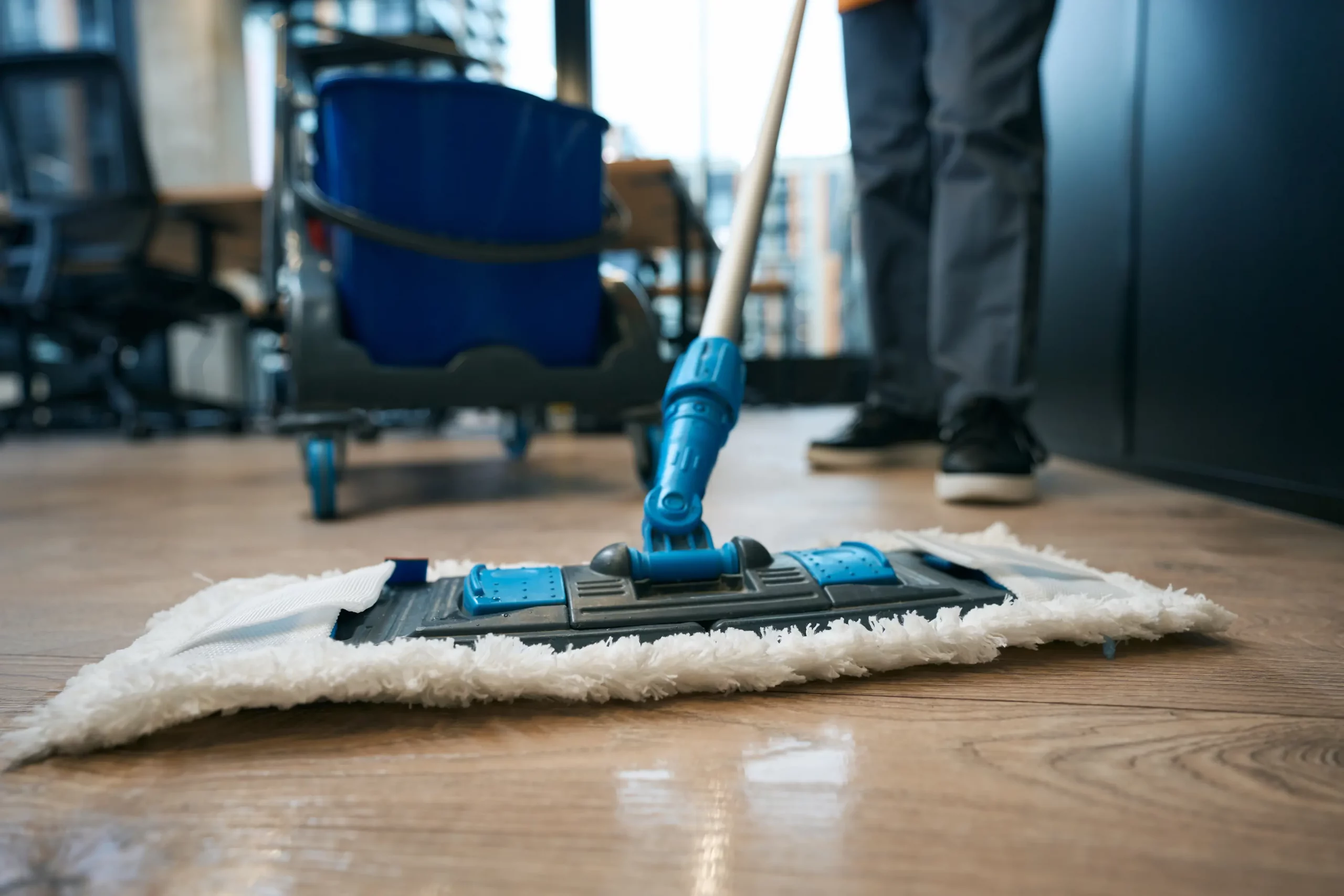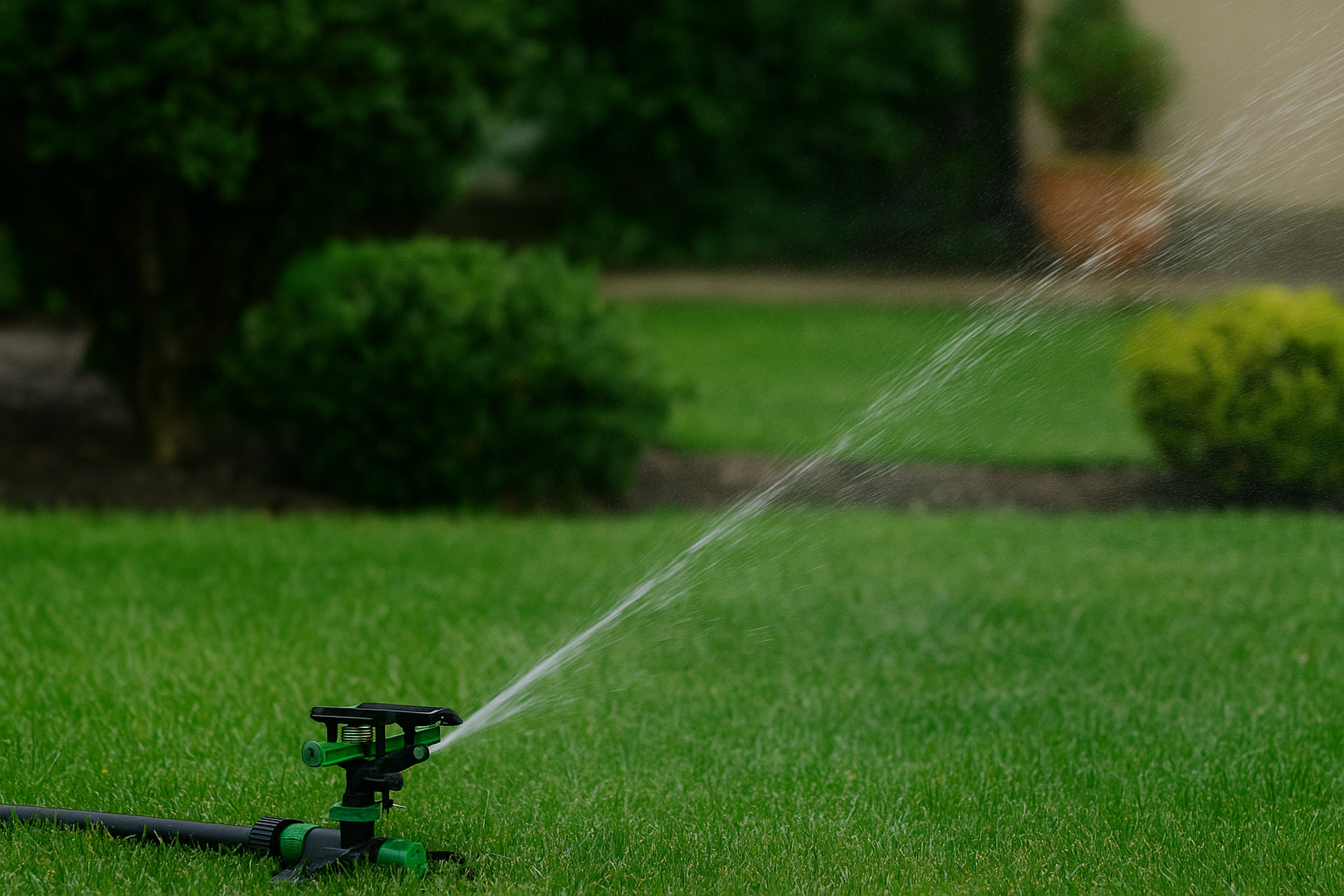Commercial buildings face a unique cleaning challenge. With heavy daily foot traffic, frequent spills, stricter safety standards, and potentially even have equipment on them, maintaining hard floors requires more than just a quick sweep. Clean, polished floors not only enhance appearance but also prevent slips and falls, boost employee pride, and extend the life of your floor. Additionally, business owners can feel safer knowing it helps prevent liability as well. In this guide, we’ll walk through proven cleaning solutions for the various different types of floor surfaces, from traditional mop-and-bucket methods to advanced cleaning technology like auto scrubbers and ride-on scrubbers.
Why Commercial Floors Need Specialized Care
Unlike residential flooring, commercial hard floors are under constant stress. Dirt, debris, and spills accumulate quickly, and if left untreated, can even cause permanent damage. Using the wrong tools or cleaners can scratch surfaces, dull finishes, or even create safety hazards. Several variations in commercial hard floors exist as well: tile floors are affordable, durable, and are common in commercial properties; concrete floors offer exceptional durability and easy maintenance in high-traffic areas; and hardwood floors are aesthetically pleasing while strong enough to withstand heavy use but require extra care to maintain.
That’s why preparation is essential. Always start with a vacuum cleaner or vacuum mop to remove loose particles that could scratch surfaces. This simple step helps prevent scratches and ensures more effective cleans once you apply water or cleaning solution. The right method varies depending on the type of floor, so let’s explore floor-specific strategies.
Floor-Specific Cleaning Recommendations
Tile Floors
- Preparation
Use a vacuum cleaner to clear away dust and grit. - Cleaning
Mix a neutral cleaner (about 1 ounce per gallon of water) in a mop and bucket or in the solution tank of a floor scrubber. Scrub thoroughly for an even finish. - Stubborn Stains
For scuffs and deep marks, increase the cleaner concentration slightly and use a figure‑eight scrubbing motion. This provides effective cleans without dulling the tile. - Drying
Always dry floors with fans or air movers. Leaving tile floors damp increases slip hazards. - Technology Upgrade
In larger spaces, auto scrubbers or walk‑behind floor scrubbers deliver consistent results while saving time.
Concrete Floors
- Preparation
Dust mop or vacuum daily to remove abrasive particles. - Cleaning
Apply a neutral pH solution and let it dwell briefly to loosen dirt. Use a mop and bucket for small areas or the solution tank of a walk‑behind scrubber for broader coverage. - Rinsing
Rinse with clean water using a fresh mop or recovery tank system. Dry thoroughly with air movers. - Maintenance
Seal concrete surfaces to reduce staining. In large warehouses or retail spaces, a ride‑on scrubber with a high‑capacity water tank is the most efficient solution for long‑term maintenance.
Hardwood Floors
- Preparation
Begin with a vacuum cleaner to lift fine dust and grit that can scratch wood. - Cleaning
Use a hardwood floor cleaner diluted properly in water. Mop gently and avoid over‑saturation. - Rinsing
Follow with clean water using a rinsed mop to remove any residue. - Drying
Air movers are the safest option. Avoid towels, which can leave behind fibers and cause scratches. - Care Tips
Consider periodic sealing or refinishing to preserve the shine. For multi‑surface facilities, use equipment designed to adapt between tile and hardwood for effective cleans.
Bringing in Cleaning Technology
Today’s cleaning technology offers a major upgrade over traditional methods. Auto scrubbers combine multiple steps into one—dispensing solution, scrubbing, vacuuming, and drying. Each machine includes a solution tank for fresh water and cleaner, plus a recovery water tank to collect dirty water.
- Walk‑Behind Floor Scrubbers: Compact and maneuverable, ideal for smaller office spaces or multi‑surface areas.
- Ride‑On Scrubbers: Larger models designed for malls, airports, and warehouses. These machines reduce cleaning times and improve long‑term productivity.
By using auto scrubbers, facilities cut chemical and water waste, reduce slip risks, and achieve more consistent cleaning results. They represent the next step in floor cleaning for facilities looking to scale beyond mop and bucket routines.
When to Call in the Professionals
Even with the best equipment, some situations call for expert care. Professional crews can:
- Assess the type of floor and select the safest cleaning solutions.
- Pre‑treat and deep clean surfaces for effective results.
- Focus on edges, corners, and high‑traffic zones.
- Place air movers for fast, safe drying.
- Offer refinishing or sealing for long‑term floor protection.
Bringing in professionals ensures that your cleaning strategy is complete and sustainable.
Conclusion
Maintaining commercial hard floors isn’t just about appearances—it’s about safety, durability, and long‑term value. From vacuum cleaners and mop‑and‑bucket basics to ride‑on scrubbers and advanced auto scrubbers, the right cleaning solution depends on your facility’s size and type of floor. By combining proven cleaning techniques with modern cleaning technology, you can achieve effective cleans, prevent scratches, and keep your building looking professional for years to come.
Ready for Expert Help?
If you’re looking for reliable support in maintaining your commercial hard floors, our team is here to help businesses throughout Chico and nearby Butte County communities. We provide tailored cleaning solutions for every type of surface—from tile and concrete to hardwood. Whether you need routine maintenance, advanced cleaning technology, or professional deep cleaning services, we can create a plan that keeps your facility safe, polished, and lasting for the long term. Reach out today to learn how we can support your floor care needs.







